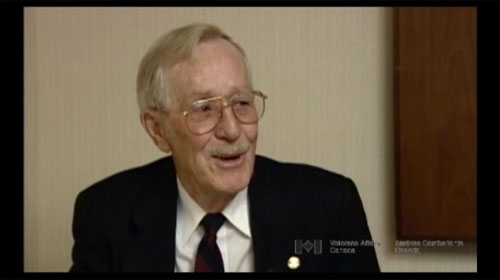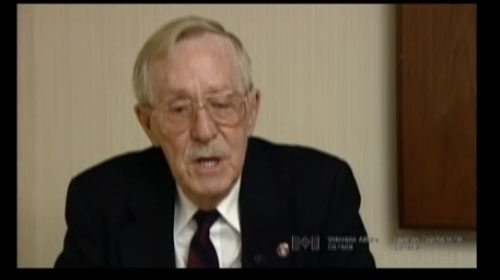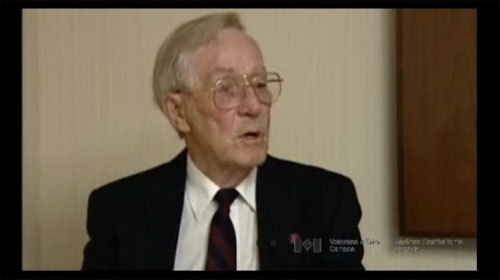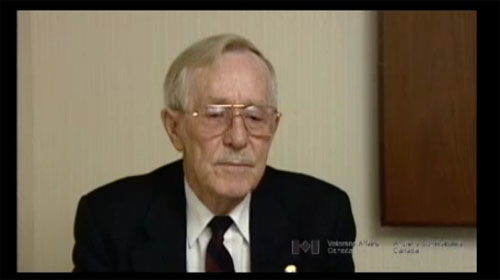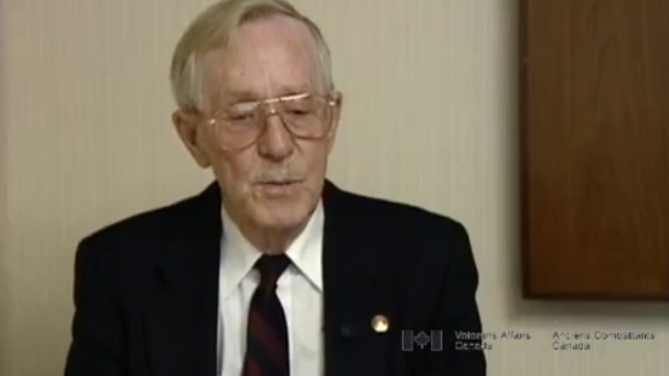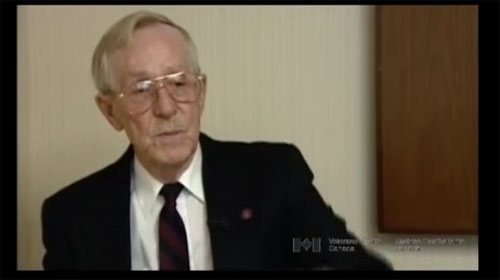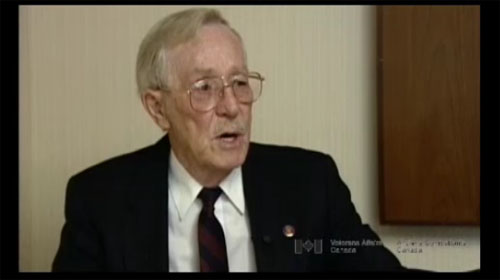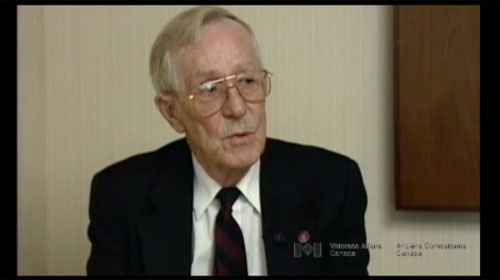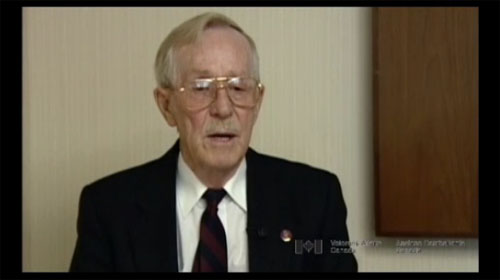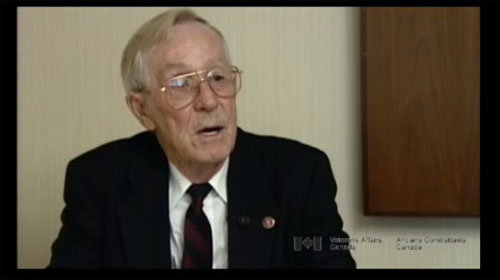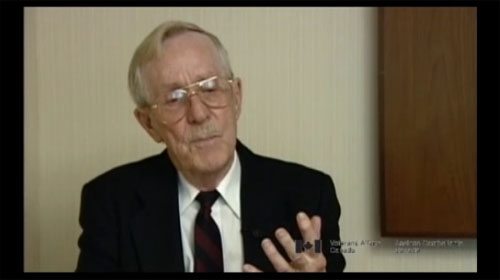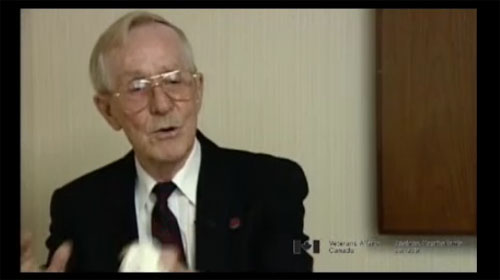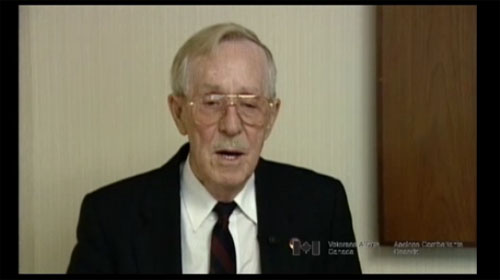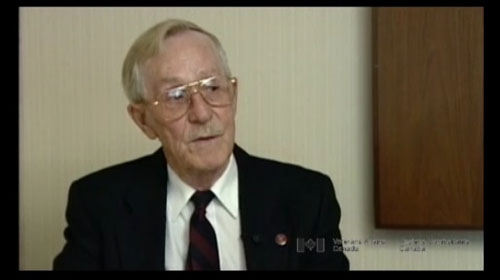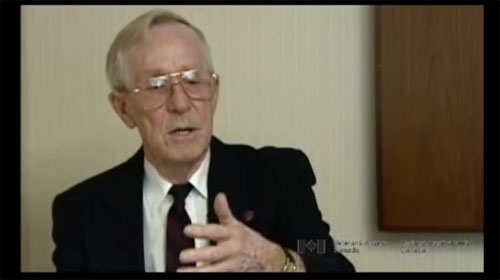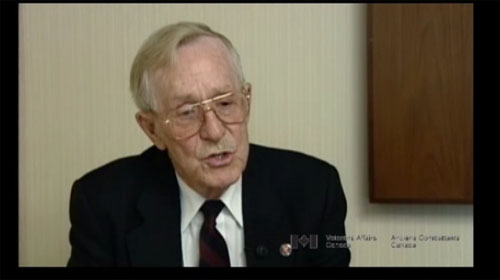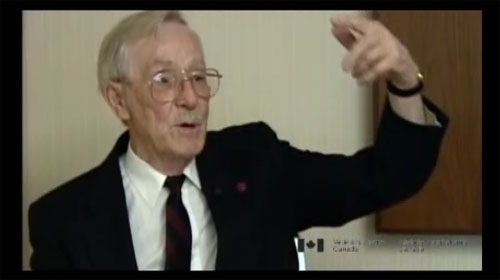A Barracks Collapses Causing Death and Injury
Heroes Remember
A Barracks Collapses Causing Death and Injury
Transcript
Description
Mr. Atkinson describes the collapse of his barracks roof. The falling beams kill eight POW’s and crush his and five others' pelvises. After some time, he is advised by a captured American doctor to start moving, or he wouldn't walk again. His mobility returns, and he goes back to work in the Niigata shipyard.
Harold Atkinson
Harold Atkinson was born on February 14, 1922 in Selkirk, Manitoba. He had three siblings. His father, a First World War Veteran, died when he was nine. His family lived on relief, seven dollars a week, and he helped by delivering papers. He finished grade nine, and then in 1940 enlisted. Mr. Atkinson was eighteen when he joined the Winnipeg Grenadiers. He served in Jamaica, guarding German and Italian nationals at an internment camp. He returned to Canada and then went to Hong Kong with his unit. Mr. Atkinson fought against and was taken prisoner by the Japanese. As a prisoner, he heard several comrades bayoneted to death. Mr. Atkinson worked at Kai Tak airport and in North Point Camp's diphtheria ward. In Omini, Japan he worked as a stevedore at the shipyard. When the war ended, Mr. Atkinson was fortunate enough to be flown home.
Meta Data
- Medium:
- Video
- Owner:
- Veterans Affairs Canada
- Duration:
- 2:26
- Person Interviewed:
- Harold Atkinson
- War, Conflict or Mission:
- Second World War
- Branch:
- Army
- Units/Ship:
- Winnipeg Grenadiers
- Rank:
- Private
- Occupation:
- Machine Gunner
Related Videos
- Date modified:



